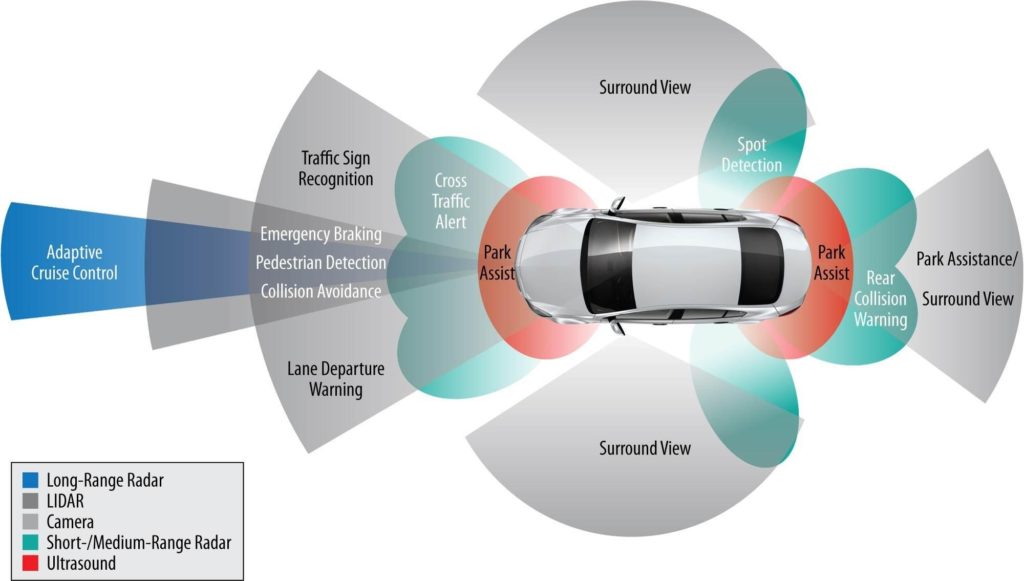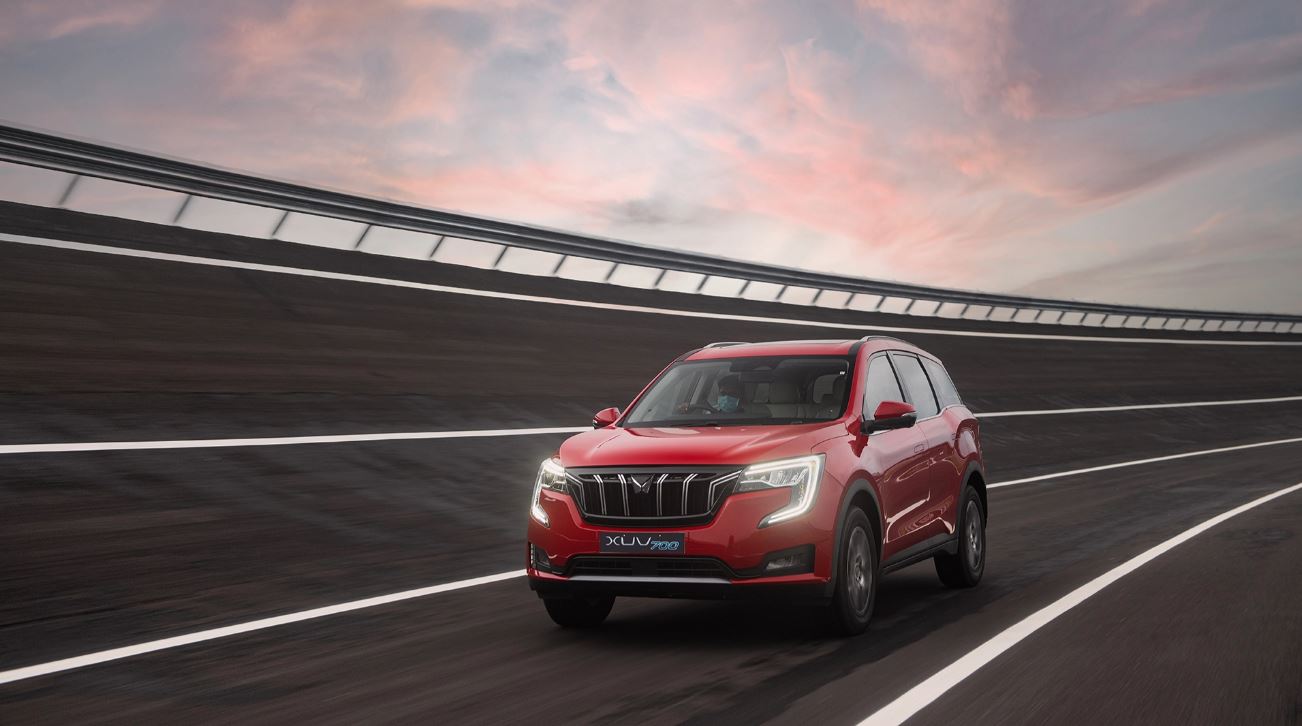What is Advanced Driver Assistance Systems (ADAS)?
ADAS is expanded as Advanced Driver Assistance Systems. The XUV700 calls it the Active Safety system. ADAS works via sensors. The sensors are embedded in the inbuilt radar and camera of the vehicle. The sensors interpret the outside world. The information retrieved as-is is either conveyed to the driver or the system itself actions based on the information if it is critical in nature, and affects the safety of the occupants and driver in the car.
As an example, if the sensors detect an object that could be in the peripheral vision or blind spot of the driver, the ADAS will alert the driver. The object could be a cyclist, an incoming vehicle etc. Another example is if the driver is veering off-track, or away from the median center of the lane, the ADAS alerts the driver after activating the lane departure feature.
The reason why ADAS is called an active technology is because the ADAS technology influences the braking and steering of the vehicle. By assisting the driver to rectify their driving and steering to prevent accidents, ADAS is an active driver assistance system.
ADAS is highly efficacious for all types of drivers, even the ones with high driving skills. ADAS is instrumental in preventing accidents of the road and saving lives.

How Advanced Driver Assistance Systems (ADAS) Works?
ADAS is not a single technology, rather a group of electronically enabled and controlled technologies. ADAS doesn’t only provide collision detection; it also has support for many other driver assistance technologies. Some of them are namely, adaptive cruise control, satellite navigation, lane centering, navigational guidance, automatic lighting, and traffic warnings. Read more about 5 Best Electric Cars in India to Watch Out For!
ADAS uses data from multiple sources or sensors and compares it to internal data. Sources of information that facilitate decision-making for the driver assistance system are based on in-car networking, image processing, LiDAR, automotive imaging, radar, and computer vision. ADAS may also rely on external sources. ADAS can have integrations for vehicle-to-vehicle communication and vehicle-to-infrastructure bi-directional communication.
ADAS automotive systems are categorized into various levels depending on the amount and scale of automation. There are five levels. In level 0, ADAS has lane departure warning, and blind spot information. In level 1, ADAS has functionality control such as emergency brake assist, and adaptive cruise control. In level 2 ADAS has autonomous parking and highway assist. In level 3, ADAS has highway chauffeur which is a fully-feature auto-pilot. In level 4, ADAS has automated valet parking. In level 5, ADAS is completely autonomous. It has to be noted that not all advanced levels are approved or commercial.
ADAS System vs. Automated Driving
ADAS is a part of Automated Driving (AD). The latter is classified into 5 levels; each level varies as per the degree of automated driving support. The first two levels are for driving support. Automated driving is from level 3 onwards. ADAS is a driving assistance function. It means that there is driver involvement and the system does not take full control of the driving.
ADAS helps all levels of AD with several functions; chief among them is collision detection. ADAS does not interfere with the driving decisions of the driver, but only assists the driver by way of alerts, information, and in some cases taking control of the steering, braking during critical situations.
Automated Driving or Autonomous Driving has five levels. They are categorized as Driver Assistance, Partial Operation Automation, Conditional Operation Automation, Advanced Operation Automation, and Full Operation Automation. Advanced driver assistance systems are generally position at Level 2. At this level, the human is responsible for all motoring decisions.
In level 3 AD, the car is responsible for any ultimate driving decisions. The driver only follows the decisions of the AD system. ADAS features are also enabled at this level, but this level is for those drivers who want to full automate their driving.
Advanced Driver Assistance Systems (ADAS) Tech in the New Mahindra XUV700
Mahindra XUV700 has unveiled modern features and technologies on its five-seater and seven-seater variant. With the inclusion of ADAS in the Mahindra XUV700, it is expected that this SUV is amongst the cars with ADAS in India with one of the safest on India’s high vehicular-density roads. Based on radar technology, and computer-vision algorithms, the ADAS is expected to provide a range of features will make driving not only safe, but fun.
Some of the notable features ADAS provides the XUV700 are:
• Traffic Sign Interpretation – ADAS technology in India recognizes traffic signs on the road such as speed limits and alerts the driver.
• ABS – ADAS facilitated ABS activates when objects suddenly come in front of the car.
• Drowsiness system – If ADAS detects that the driver is losing focus, the system alerts the driver.
• High beam assist – When incoming vehicles are on high-beam, and if it causes issues with driver visibility, ADAS can automatically switch the beam to low-beam.
Featured Image Source – https://autotechreview.com/
Must Read: Exploring the MG Astor Launch with AI Assistant in India








Continuamente solía leer artículos o reseñas más pequeños que también aclaran su motivo, y eso también está sucediendo con este escrito que estoy leyendo en este lugar.